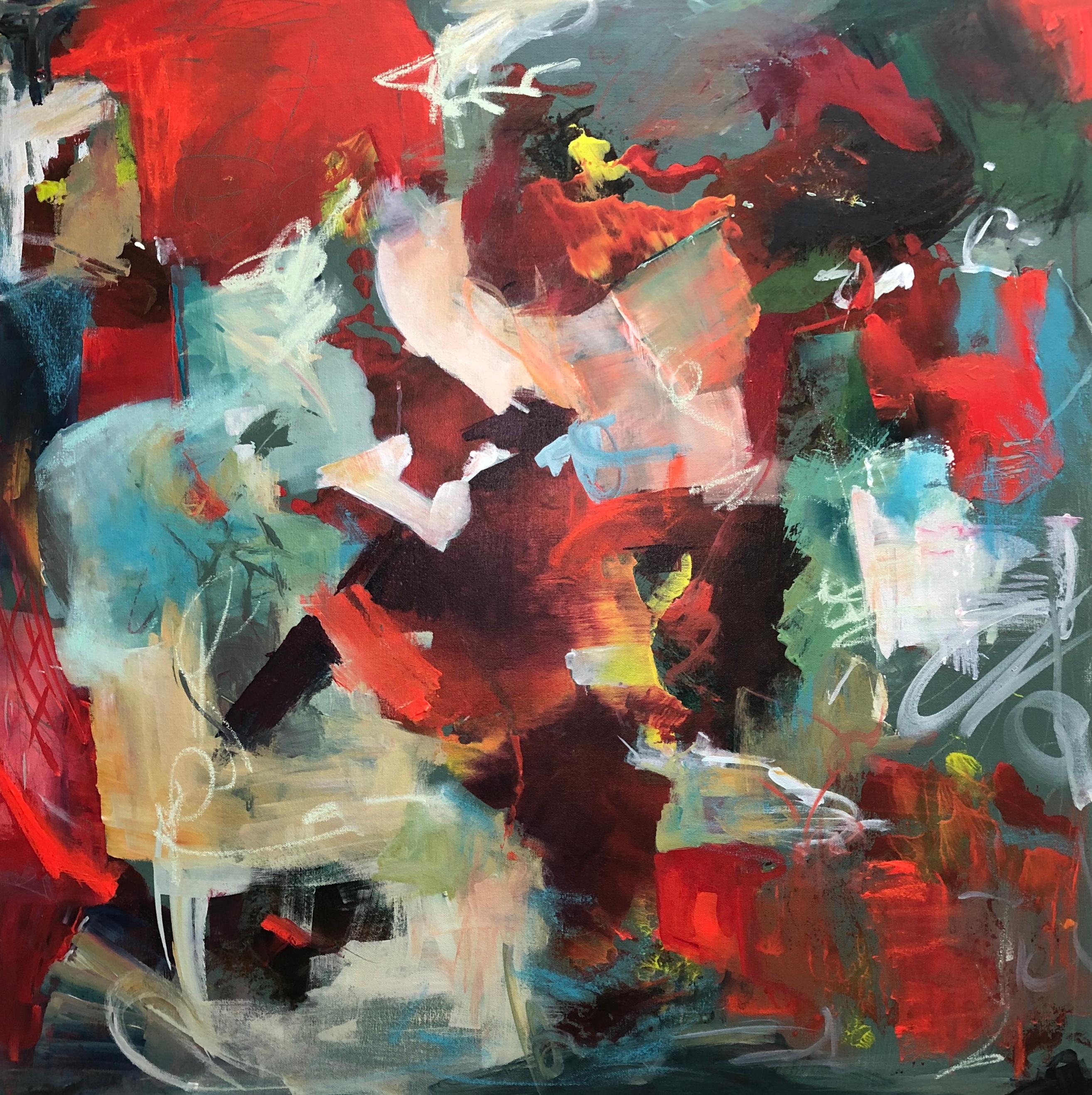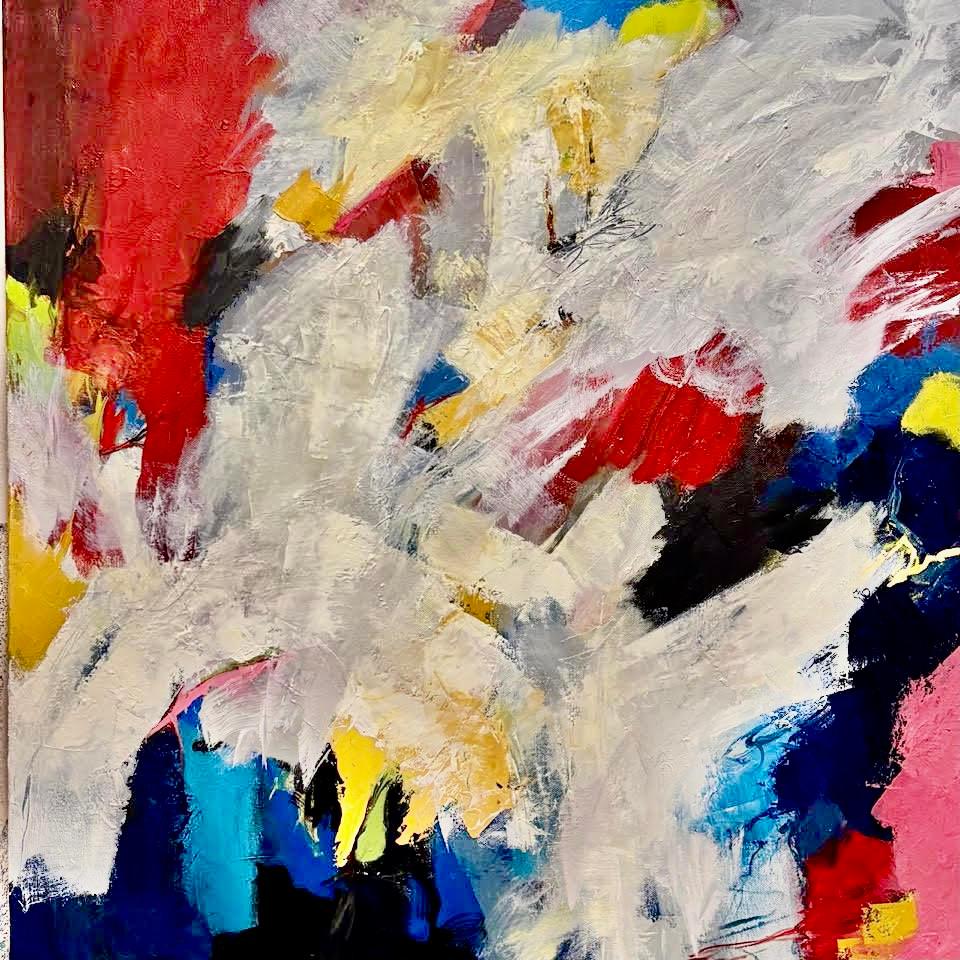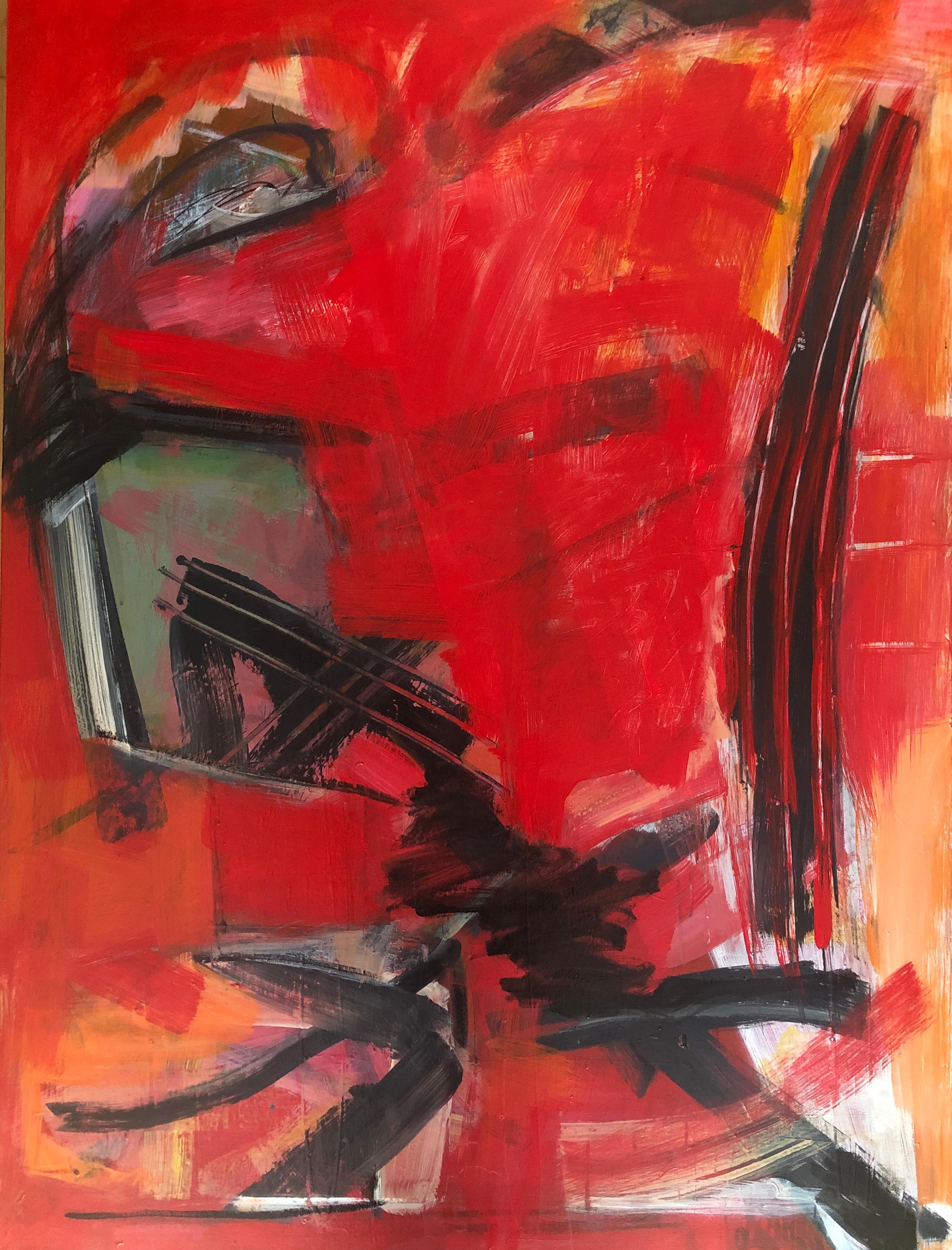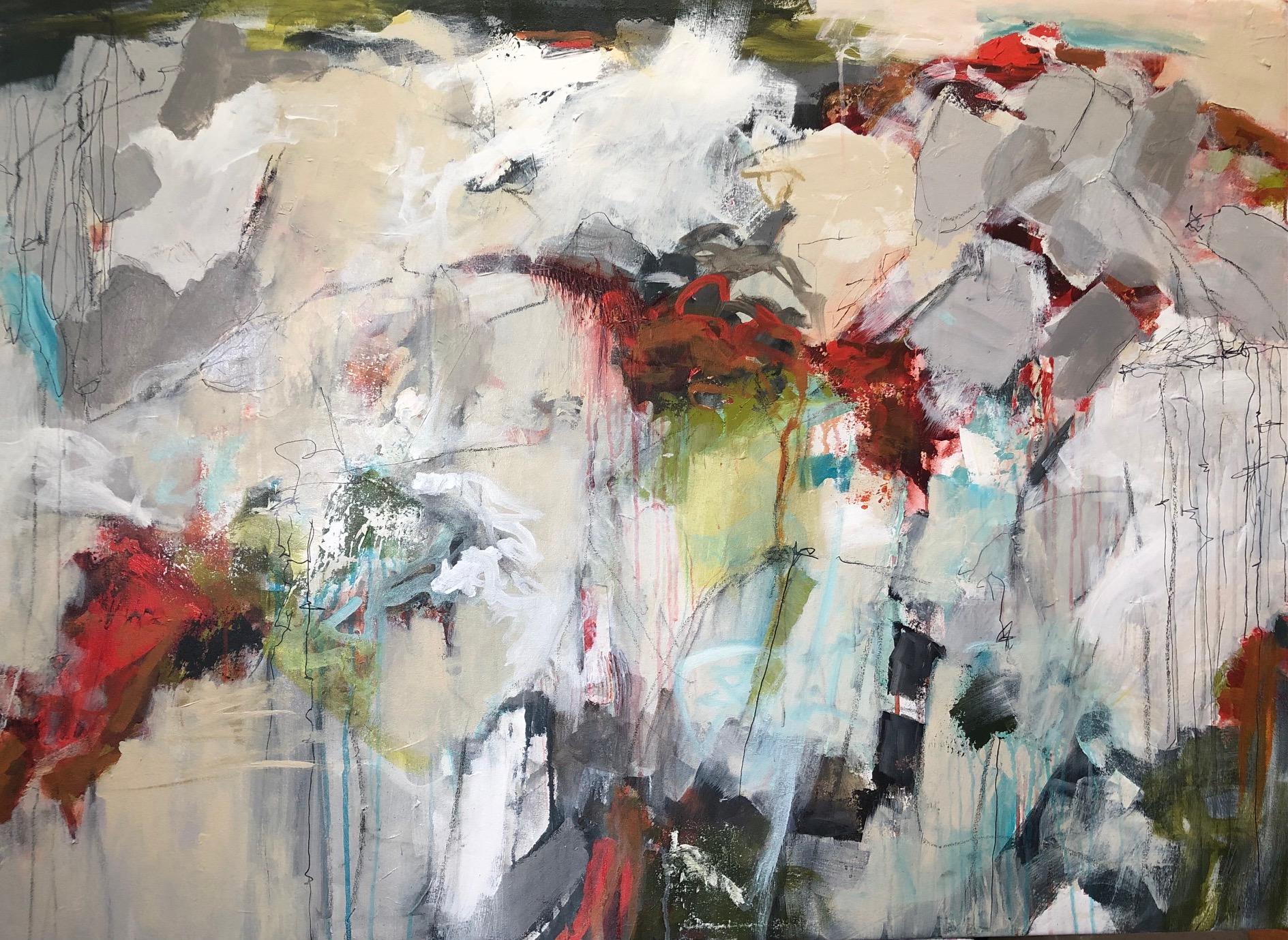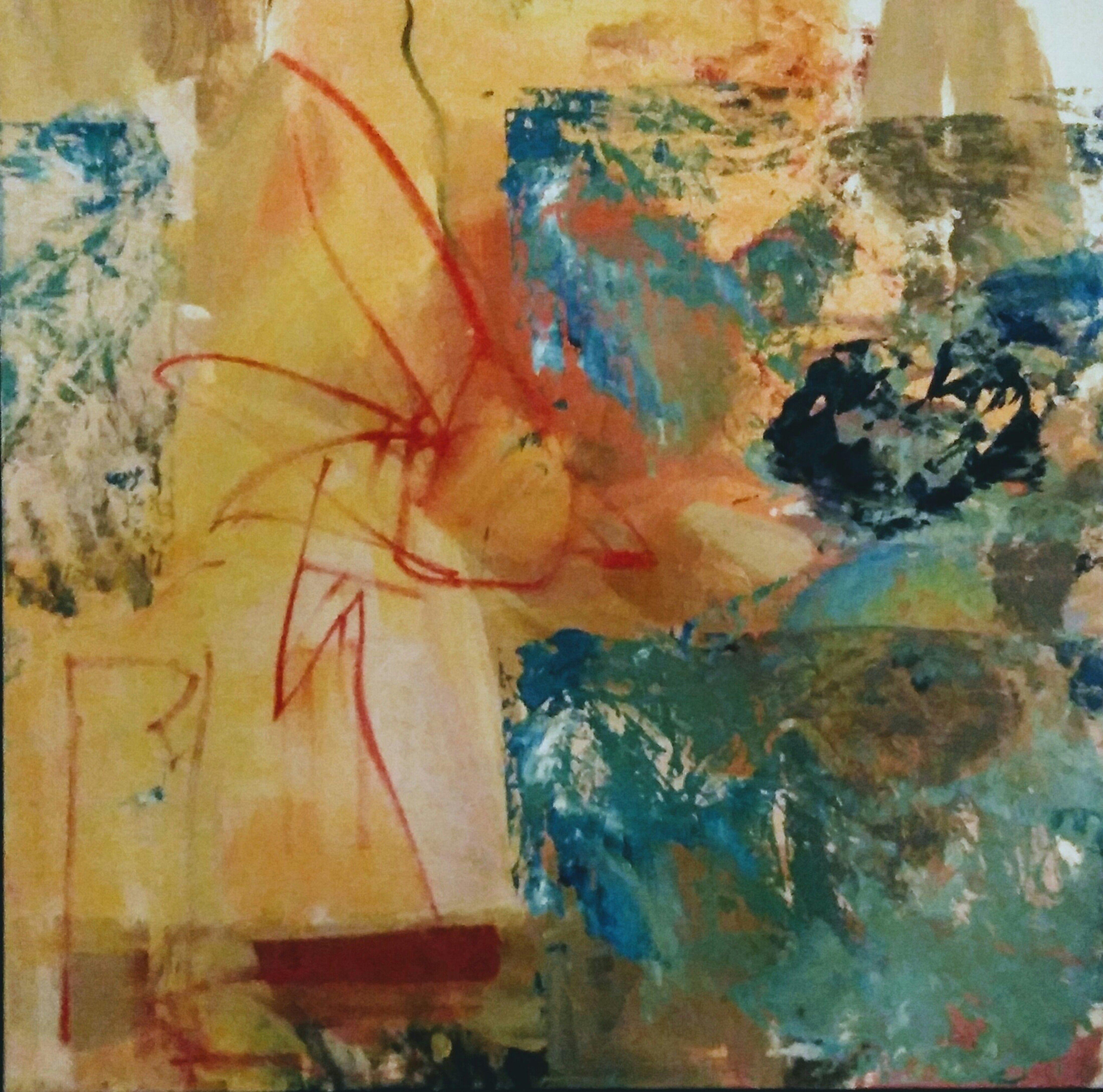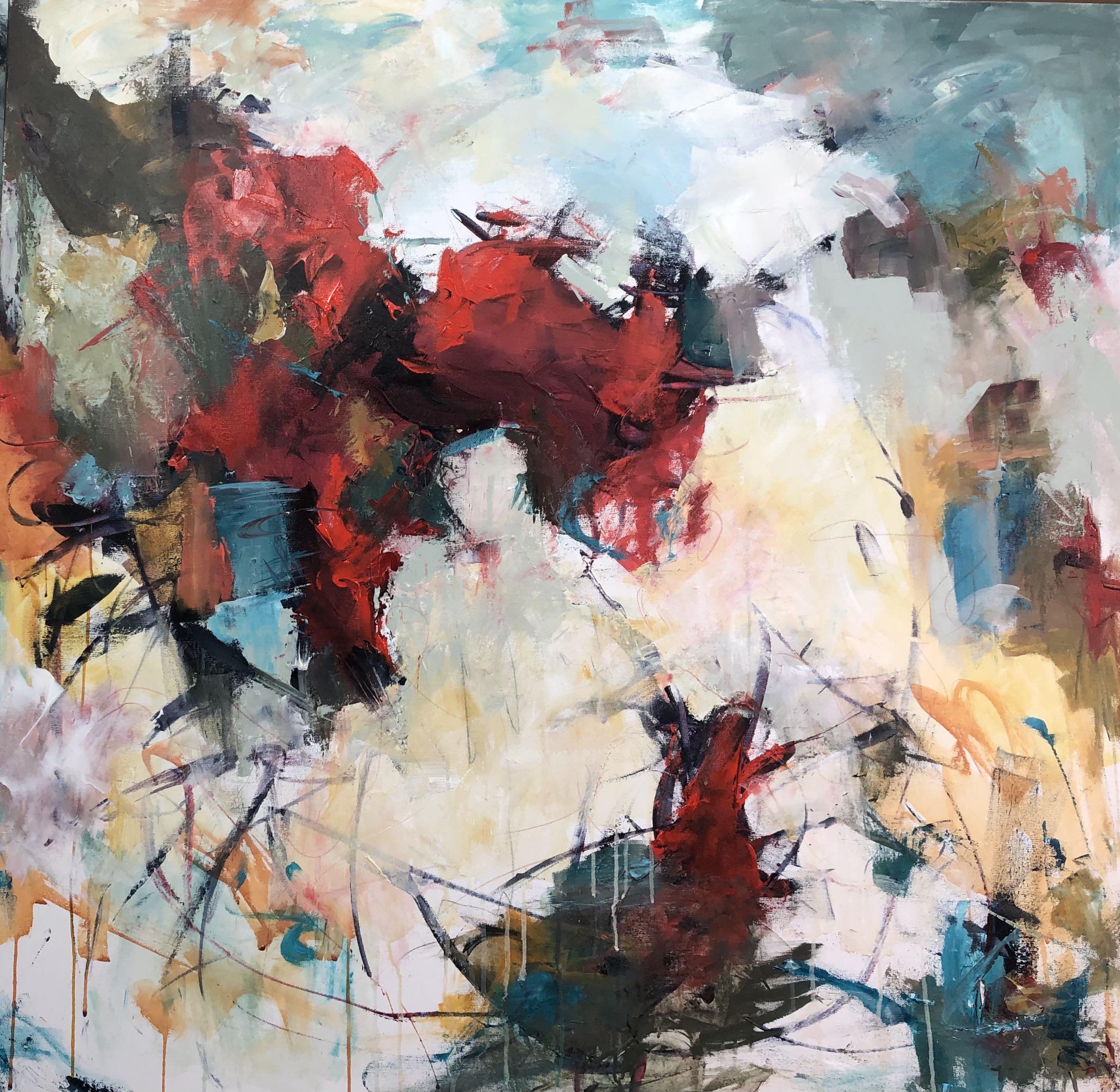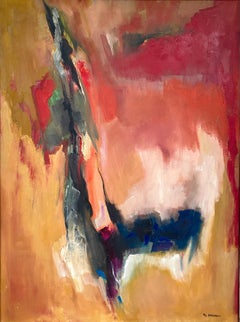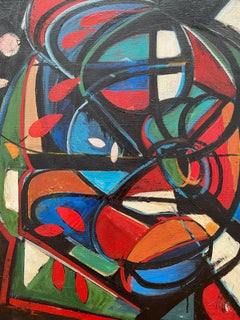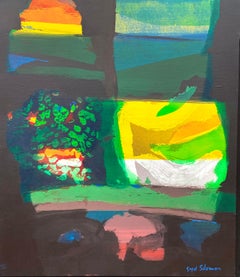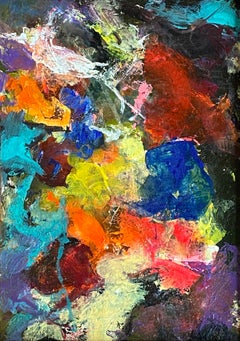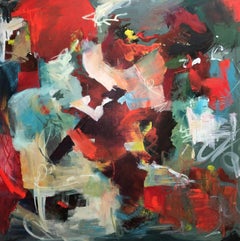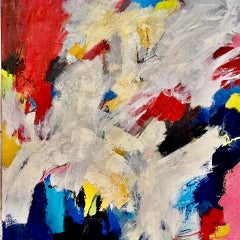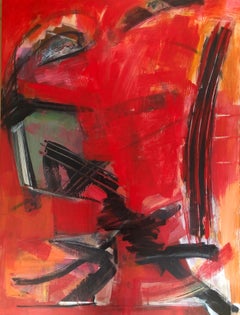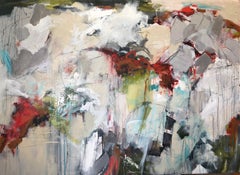Items Similar to "Red Fish"
Want more images or videos?
Request additional images or videos from the seller
1 of 7
Dina Gustin Baker"Red Fish"Circa 1960
Circa 1960
$1,920
$2,40020% Off
£1,468
£1,835.0120% Off
€1,680.38
€2,100.4720% Off
CA$2,707.43
CA$3,384.2920% Off
A$2,947.34
A$3,684.1820% Off
CHF 1,573.36
CHF 1,966.7120% Off
MX$35,581.19
MX$44,476.4920% Off
NOK 19,783.11
NOK 24,728.8920% Off
SEK 18,387.10
SEK 22,983.8720% Off
DKK 12,549.99
DKK 15,687.4820% Off
About the Item
Dina Gustin Baker studied at the Philadelphia college of Fine Art as well as the Art Students League in New York. This work acrylic on paper is evocative of her colorful palette and wonderful sense of movement found in her work. The work is signed on the far right side middle. Circa 1960's. The painting is acrylic on artist board and is professionally silk matted with a thin gold metal gallery frame. Overall measurement is
In 2012 a retrospective of her work was exhibited at the Walter Wickiser Gallery in New York. Her work has also been featured in the Boca Raton Museum of Art in South Florida.
- Creator:Dina Gustin Baker (1940, American)
- Creation Year:Circa 1960
- Dimensions:Height: 21.5 in (54.61 cm)Width: 27.5 in (69.85 cm)Depth: 0.75 in (1.91 cm)
- Medium:
- Movement & Style:
- Period:
- Condition:
- Gallery Location:Southampton, NY
- Reference Number:1stDibs: LU141284032
About the Seller
5.0
Platinum Seller
Premium sellers with a 4.7+ rating and 24-hour response times
Established in 1977
1stDibs seller since 2013
555 sales on 1stDibs
Typical response time: <1 hour
- ShippingRetrieving quote...Shipping from: Southampton, NY
- Return Policy
More From This Seller
View All“Composition Red and Gold”
Located in Southampton, NY
Original oil on canvas painting by the American artist Miriam H. Greenberg. Signed lower right. Titled “Composition Red and Gold” and dated verso, 1988. Condition is very good. Orig...
Category
1980s Post-Modern Abstract Paintings
Materials
Canvas, Oil
$1,250 Sale Price
30% Off
“Untitled Abstract”
By Nahum Tschacbasov
Located in Southampton, NY
Original mid-century modern abstract oil on canvas painting by the well known Russian/American artist Nahum Tschacbasov. Signed lower right and dated 1945. Condition is very good. P...
Category
1940s Abstract Expressionist Abstract Paintings
Materials
Canvas, Oil
“Multishore”
By Syd Solomon
Located in Southampton, NY
Original oil on canvas painting titled “Multishore” by the well known American artist, Syd Solomon.
Signed Syd Solomon lower right. Signed and dated Syd Solomon 1971 on the stretcher, inscribed as titled on the reverse
30 × 26 inches. Condition is excellent. The painting is housed in its original wood with silver reveal floating frame. Overall framed measurements are 32.75 by 28.75 inches. Provenance: A private collector.
Syd Solomon was born near Uniontown, Pennsylvania, in 1917. He began painting in high school in Wilkes-Barre, where he was also a star football player. After high school, he worked in advertising and took classes at the Art Institute of Chicago. Before the attack on Pearl Harbor, he joined the war effort and was assigned to the First Camouflage Battalion, the 924th Engineer Aviation Regiment of the US Army. He used his artistic skills to create camouflage instruction manuals utilized throughout the Army. He married Ann Francine Cohen in late 1941. Soon thereafter, in early 1942, the couple moved to Fort Ord in California where he was sent to camouflage the coast to protect it from possible aerial bombings. Sent overseas in 1943, Solomon did aerial reconnaissance over Holland. Solomon was sent to Normandy early in the invasion where his camouflage designs provided protective concealment for the transport of supplies for men who had broken through the enemy line. Solomon was considered one of the best camoufleurs in the Army, receiving among other commendations, five bronze stars. Solomon often remarked that his camouflage experience during World War II influenced his ideas about abstract art. At the end of the War, he attended the École des Beaux-Arts in Paris.
Because Solomon suffered frostbite during the Battle of the Bulge, he could not live in cold climates, so he and Annie chose to settle in Sarasota, Florida, after the War. Sarasota was home to the John and Mable Ringling Museum of Art, and soon Solomon became friends with Arthur Everett “Chick” Austin, Jr., the museum’s first Director. In the late 1940s, Solomon experimented with new synthetic media, the precursors to acrylic paints provided to him by chemist Guy Pascal, who was developing them. Victor D’Amico, the first Director of Education for the Museum of Modern Art, recognized Solomon as the first artist to use acrylic paint. His early experimentation with this medium as well as other media put him at the forefront of technical innovations in his generation. He was also one of the first artists to use aerosol sprays and combined them with resists, an innovation influenced by his camouflage experience.
Solomon’s work began to be acknowledged nationally in 1952. He was included in American Watercolors, Drawings and Prints at the Metropolitan Museum of Art, New York. From 1952–1962, Solomon’s work was discovered by the cognoscenti of the art world, including the Museum of Modern Art Curators, Dorothy C. Miller and Peter Selz, and the Whitney Museum of American Art’s Director, John I. H. Baur. He had his first solo show in New York at the Associated American Artists Gallery in 1955 with “Chick” Austin, Jr. writing the essay for the exhibition. In the summer of 1955, the Solomons visited East Hampton, New York, for the first time at the invitation of fellow artist David Budd. There, Solomon met and befriended many of the artists of the New York School, including Jackson Pollock, Franz Kline, Willem de Kooning, James Brooks, Alfonso Ossorio, and Conrad Marca-Relli. By 1959, and for the next thirty-five years, the Solomons split the year between Sarasota (in the winter and spring) and the Hamptons (in the summer and fall).
In 1959, Solomon began showing regularly in New York City at the Saidenberg Gallery with collector Joseph Hirshhorn buying three paintings from Solomon’s first show. At the same time, his works entered the collections of the Whitney Museum of American Art, the Solomon R. Guggenheim Museum, and the Wadsworth Athenaeum in Hartford, Connecticut, among others. Solomon also began showing at Signa Gallery in East Hampton and at the James David Gallery in Miami run by the renowned art dealer, Dorothy Blau.
In 1961, the Guggenheim Museum’s H. H. Arnason bestowed to him the Silvermine Award at the 13th New England Annual. Additionally, Thomas Hess of ARTnews magazine chose Solomon as one of the ten outstanding painters of the year. At the suggestion of Alfred H. Barr, Jr., the Museum of Modern Art’s Director, the John and Mable Ringling Museum in Sarasota began its contemporary collection by purchasing Solomon’s painting, Silent World, 1961.
Solomon became influential in the Hamptons and in Florida during the 1960s. In late 1964, he created the Institute of Fine Art at the New College in Sarasota. He is credited with bringing many nationally known artists to Florida to teach, including Larry Rivers, Philip Guston, James Brooks, and Conrad Marca-Relli. Later Jimmy Ernst, John Chamberlain, James Rosenquist, and Robert Rauschenberg settled near Solomon in Florida. In East Hampton, the Solomon home was the epicenter of artists and writers who spent time in the Hamptons, including Alfred Leslie, Jim Dine, Ibram Lassaw, Saul Bellow, Barney Rosset, Arthur Kopit, and Harold Rosenberg.
In 1970, Solomon, along with architect Gene Leedy, one of the founders of the Sarasota School of Architecture, built an award-winning precast concrete and glass house and studio on the Gulf of Mexico near Midnight Pass in Sarasota. Because of its siting, it functioned much like Monet’s home in Giverny, France. Open to the sky, sea, and shore with inside and outside studios, Solomon was able to fully solicit all the environmental forces that influenced his work. His friend, the art critic Harold Rosenberg, said Solomon’s best work was produced in the period he lived on the beach.
During 1974 and 1975, a retrospective exhibition of Solomon’s work was held at the New York Cultural Center and traveled to the John and Mable Ringling Museum in Sarasota. Writer Kurt Vonnegut, Jr. conducted an important interview with Solomon for the exhibition catalogue. The artist was close to many writers, including Harold Rosenberg, Joy Williams, John D. McDonald, Budd Schulberg, Elia Kazan, Betty Friedan...
Category
1970s Abstract Expressionist Abstract Paintings
Materials
Canvas, Oil
“Untitled”
By John Little
Located in Southampton, NY
Original oil on canvas painting by the well known abstract expressionist artist, John Little. Signed lower right. Signed and dated 1965 on top stretcher bar verso. Betty Parsons Ga...
Category
1960s Abstract Expressionist Abstract Paintings
Materials
Canvas, Oil
$9,600 Sale Price
20% Off
“Untitled”
By John Little
Located in Southampton, NY
Early, original oil on canvas painting by the well known American abstract expressionist artist, John Little. Signed and dated lower right, 1958.
Signed and dated verso. Rose Fried...
Category
1950s Abstract Expressionist Abstract Paintings
Materials
Canvas, Oil
$14,000
“Untitled Abstract”
Located in Southampton, NY
Original oil on canvas abstract painting by the Czech/German artist, Walter Blumel. Signed upper right by the artist and verso as well. Condition is very good. Circa 1965. Overall ...
Category
1960s Abstract Expressionist Abstract Paintings
Materials
Canvas, Oil
You May Also Like
Power of Red
Located in Baton Rouge, LA
I intuitively paint each of my paintings based on my mood of the day or at that moment. I never know what I am going to create until I see the end result. Sometimes it is a colorful,...
Category
2010s Abstract Expressionist Abstract Paintings
Materials
Canvas, Acrylic
$2,040 Sale Price
20% Off
"Back to Red"
By Cathy Bennigson
Located in Wellesley, MA
Elegant Abstract Expressionist painting with soft geometric elements in black, white, red, yellow ochre, and blue:
Cathy Bennigson
"Back to Red"
2025
Oil on Canvas
36 x 36 Inches
...
Category
2010s Abstract Expressionist Abstract Paintings
Materials
Canvas, Oil
Defiant, bold predominantly red gestural abstract painting
By Cheryl Rubin
Located in Brooklyn, NY
Dramatic abstract acrylic painting
Bright red and orange colors
Category
2010s Abstract Abstract Paintings
Materials
Canvas, Acrylic
Red, Hot & You, Abstract, Acrylic on Canvas, Shapes, Colors, Organic Forms
By Peggy Vineyard
Located in Houston, TX
Red, Hot and You is an acrylic on canvas by artist Peggy Vineyard. It was completed in 2021. Red, Hot and You brings out the colors in this abstrac...
Category
2010s Abstract Expressionist Abstract Paintings
Materials
Canvas, Acrylic
$2,860 Sale Price
35% Off
"Red And Teal", Painting, Acrylic on Canvas
By June Johnson
Located in Yardley, PA
This red yellow and teal abstraction evokes a garden feeling. :: Painting :: Abstract :: This piece comes with an official certificate of authenticity signed by the artist :: Ready t...
Category
2010s Abstract Abstract Paintings
Materials
Acrylic
Always Red
Located in Baton Rouge, LA
I intuitively paint each of my paintings based on my mood of the day or at that moment. I never know what I am going to create until I see the end result. Sometimes it is a colorful,...
Category
2010s Abstract Expressionist Abstract Paintings
Materials
Canvas, Acrylic
$3,240 Sale Price
20% Off
